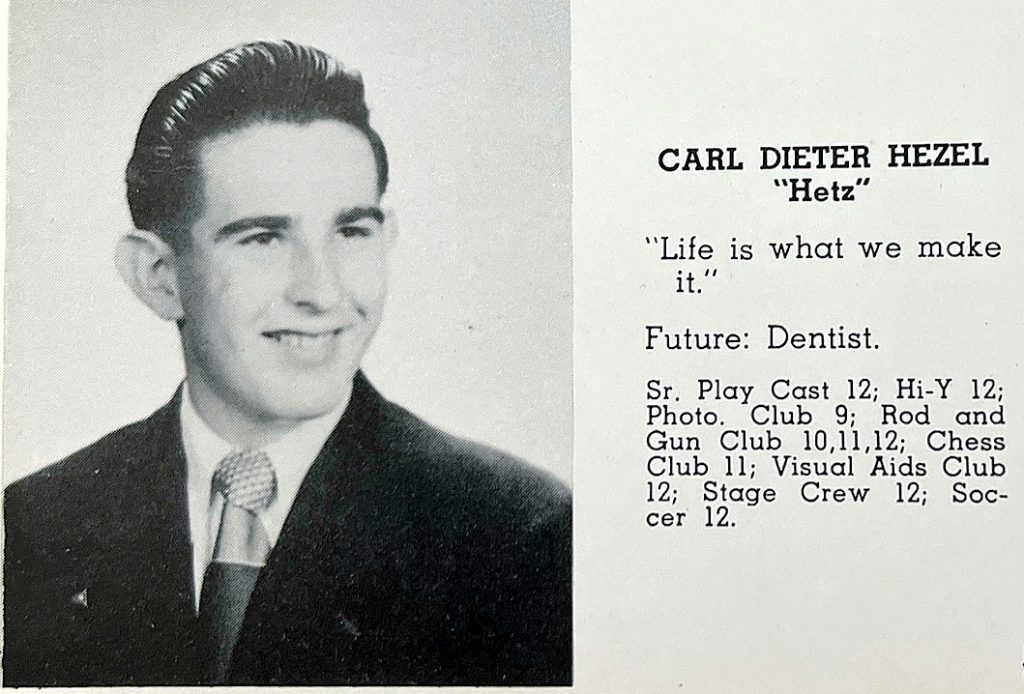
Meet USAF Major Karl Dieter Hezel, Electronic Warfare Officer – Cranford 86
Written by Vic Bary
The research effort that goes into constructing the history of a Cranford 86 honoree takes a team effort, perhaps never more so than with the history constructed for Major Karl Dieter Hezel, USAF. Research was conducted by our leader, Don Sweeney, by members Stu Rosenthal and Janet Cymbaluk Ashnault, by friend and supporter Don P. Smith, a retired Army colonel and resident of Cranford’s “Sunny Acres” neighborhood, and by friend Steve Glazer, a retired Army lieutenant colonel. Lastly, research was done by me, the lead writer, Cranford 86 member Vic Bary.
I asked to be the lead writer on this story as I felt a certain bond with Major Hezel. In 1967, while he was flying missions from Thailand into North Vietnam, I was serving with an Army helicopter unit northwest of Saigon. I thought that gave the two of us a certain connectedness.
Where do you start when attempting to tell the story of Major Karl Dieter Hezel, who flew over 100 missions during the Vietnam War, meeting his tragic end on his 110thmission. Perhaps we should follow the advice of the king to Alice in Alice in Wonderland: “Begin at the beginning…”
Karl Dieter Hezel’s Early Years
Karl Dieter Hezel was born in Goeppinger, Germany December 8, 1933. His parents, Karl Frederick Hezel and Maria Buehler Hezel, were both German citizens, but had visited the U.S. several times to visit relatives. They were married in New Jersey on September 30, 1930, and returned to Germany sometime thereafter. The Hezels came back to the U.S. permanently in July 1934, taking up residence at 635 Madison Avenue, Elizabeth, NJ. Frederick was employed by P. Ballantine and Sons.
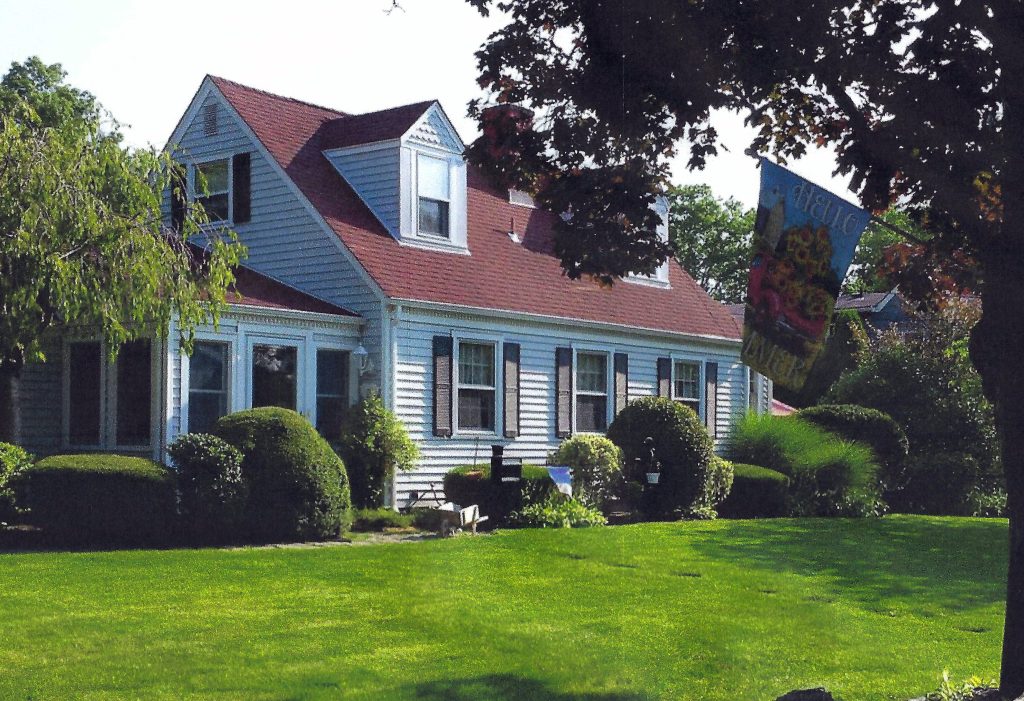
In 1941, the Hezel family relocated to Cranford, buying a house at 2 Oneida Place, a house built in the second construction phase of Sears, Roebuck and Co’s “Sunny Acres” development on the southern border of Cranford. By then, Karl F. was reported to be a brewmaster at P. Ballantine and Sons. Karl Frederick became a naturalized U.S. citizen in 1937. Maria Hezel became a naturalized U.S. citizen in 1944. Young Karl Dieter Hezel would be their only child.
By any measure, Karl Dieter Hezel was a boy’s boy. Perhaps nothing reflected this as well as when, as a 10-year-old on February 10, 1944, he fell through thin ice playing on the Rahway River near his home at 2 Oneida Place. Fortunately, a passing truck driver witnessed the event and pulled him to safety.
Young Karl would be schooled at Lincoln School and then go on to Cranford High School, graduating in 1951. He seemed to enjoy outdoor activities and sports. In 1943 he was the Osceola Playground ball pitching contest winner. He would repeat the feat again in 1949 as the senior boys’ softball pitch winner at a playground competition. He was an avid member of the Rod and Gun Club and was pictured in a 1950 Cranford Citizen and Chronicle article, skeet shooting with the club.
Boy Scouts
Karl was an active member of Troop 76 of the local Boy Scouts. In October 1947 he attended a one-week camping trip at Surprise Lake with his troop. In July, 1949 he received the White Oak award. In May 1950 – perhaps a sign of things to come – he earned his Pathfinding Merit Badge.
Schooling
After attending Lincoln School Karl went on to Cranford High School, from which he would graduate in 1951. An honor roll student, Karl was active in a wide variety of activities. He played varsity tennis and soccer and was a member of the Rod and Gun Club. In 1951 Karl was a member of the senior class production of “Oh Suzannah!”. His high school senior yearbook entry records that he belonged to the photo, chess, and visual aids clubs as well as the stage crew. In 1951 he joined Hi-Y (a WMCA sponsored service club for middle and high school boys and girls).
After high school, Karl attended Temple University and then the University of Miami, where he received a BA in political science in 1956. A member of the United States Air Force (USAF) ROTC program, he was commissioned upon graduation as a 2ndLieutenant. After entering active military service, he would earn both an electrical engineering BS, and an MS in aerospace systems engineering from the Air Force Institute of Technology.
Early Military Career – A Classmate Remembers
After entering active duty and completing Basic Training, 2nd LT Hezel was sent to Ellington Air Force Base, Houston, TX to be trained and rated as a navigator in 1957. (Remember his Boy Scout Pathfinder badge?) Navigator training lasted 42 weeks and included 180 hours of in-flight training. By that time, he was married to Frances Osowski Hezel. He then went to Keesler Air Force Base for a six-month course to train and be rated as an electronic warfare officer (EWO) in 1958.

We learned some personal information about this time in Karl’s life upon discovery of an online tribute. Three o’clock p.m. on Memorial Day has been designated by Congress as the National Moment of Remembrance. As an act of national unity Americans are asked to stop for one minute to reflect on the sacrifices that U.S. military members have made. On Memorial Day 2023, Air Force veteran Steve Burton spent this moment thinking about his friend and USAF classmate, Karl Hezel. He then took the time to share his thoughts on Karl on The Wall of Faces -Vietnam Veterans Memorial Fund website.
Steve’s post reads in part:
“I first met Karl at Ellington AFB, Houston Texas in January, 1957. We were in the same Navigator training class. … Like me, Karl was married – his wife Fran and my wife Marnell became friends off base. We lived in the same apartment complex in Houston. Karl and I and two other classmates carpooled for the daily trip to Ellington.
In class, and off-base the Hezels and Burtons often socialized – often a quite amusing time as the Hezels constant companions were their two Weimaraners. Like me, Karl was accepted into ECM (Electronic Counter Measures) School after getting our Navigator wings – classmates again but now at Keesler AFB in Biloxi, Mississippi.
ECM was a six-month school, and an additional upgraded aeronautical rating if you graduated. The majority of graduates went directly to SAC (the Strategic Air Command) – and would probably join a crew in a B52. Karl and I had the same class schedule and often flew training missions together … I expected to go to SAC, but was offered a position as a teacher at the school – 5-week course in basic electronic systems. Karl went to SAC – first station … Larsen AFB, Moses Lake, WA. … Karl put in for a ‘regular commission’ in early 1959 and began his career … I got out of the Air Force just before the end of 1959”.
Karl Becomes an Electronic Warfare Officer
In the U.S. Air Force, an electronic warfare officer (EWO) was a trained aerial navigator who had also received additional training in enemy threat systems, electronic warfare principles and overcoming enemy air defense systems (his Electronic Counter Measures training.) These officers were specialists in finding, identifying and countering air defense systems and also radar-, infrared-, optically- guided surface-to-air missiles, anti-aircraft artillery, as well as enemy fighter planes. In aircraft that could penetrate enemy airspace, EWOs protected the aircraft that they accompanied using radar jamming, chaff (metal confetti) and flares to deceive potential threats. In other aircraft, EWOs worked to gather intelligence information on potential enemy air defense systems and communication systems. Karl Hezel would become an EWO and his aircraft was the Douglas B-66 “Destroyer”. The EWOs were referred to as “Ravens” and their jamming devices emitted a 45-degree radar jamming cone toward the ground.
Karl Hezel’s Aircraft – the B-66 “Destroyer”
The B-66 “Destroyer” was a USAF adaptation of the U.S. Navy A-3 “Sky Warrior”. Development began in 1954 to replace the USAF prop-driven A-26 “Invader”. The B-66 was accepted into service in 1956 and removed from service in 1975.
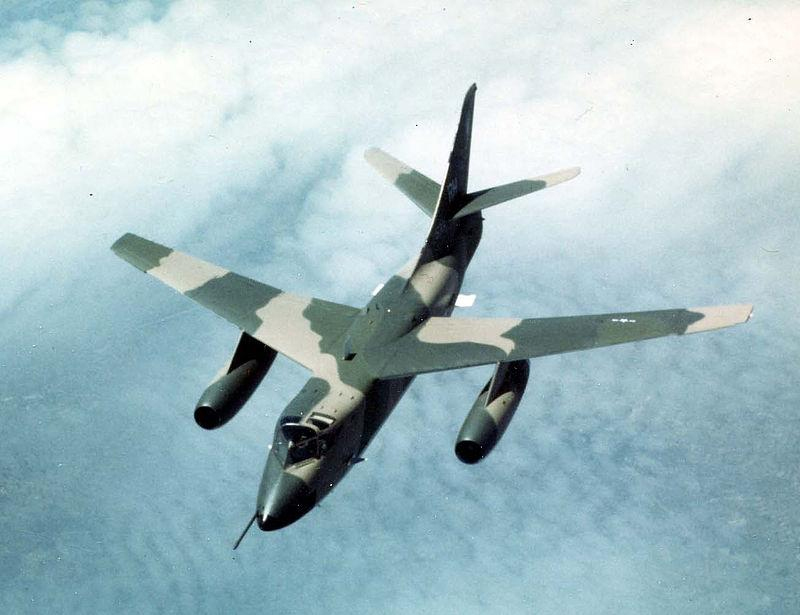
The resulting B-66 was highly (90%) modified from the Navy A-3 design because of the differing roles they would assume. The A-3 was to be a high-altitude nuclear bomber. The B-66 was to be a lower altitude tactical bomber, with subsequent modifications for roles as a reconnaissance (RB), electronic weapons (EB), and weather (WB) platform. (Other changes, such as substituting the less efficient and lower thrust Allison J71 engines in place of the Navy’s proven Pratt & Whitney J57, may have simply reflected the intense inter-service rivalry of the time and the need for each branch of the armed services “to be different” from the others. It also reflected a fear by the Air Force that competing demand for the J57s might make them unavailable in sufficient quantity for the B-66 development program.)
No B-66 ever served as a bomber in Vietnam, and the crews were therefore increased from the A-3’s three, to the USAF B-66 seven for their different missions, with the additional four crew members housed in what would have been the bomber’s bomb bay. Thirty-six (36) RB-66Cs were constructed, and four would be converted to EB-66C electronic warfare versions for service in Vietnam with uprated electronic countermeasures equipment. This was the aircraft in which Major Karl Hezel served. Each EWO in the pod would monitor an assigned set of electronic frequencies to detect, then jam, enemy weapon systems.
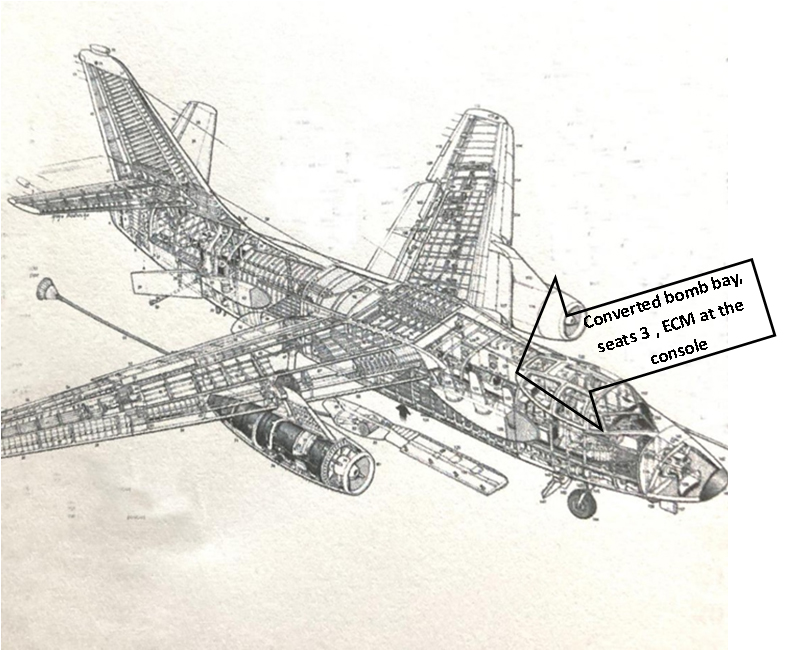
Warfare Becomes More Sophisticated
During the Korean War, the USAF had only one A-26 (the aircraft the B-66 would replace) devoted to electronic countermeasures. Weapons of that period were visually sighted, then dropped (bombs) or fired (guns). But by the early 1960s and the developing Vietnam War, anti-aircraft guns were becoming radar directed. The Soviet Union supplied these to North Vietnam, together with radar-guided Surface to Air Missiles (SAMs). The B-66 was modified to try to defeat these radar systems.
Initially, B-66s engaged in classic electronic reconnaissance (ELINT) which required collected information to be analyzed and compiled on the ground after the flight. As more and more North Vietnamese anti-aircraft artillery (AAA) and Surface to Air Missiles (SAMs) became mobile, real-time ELINT and electronic countermeasures (ECM) became the order of the day. The EB-66C model gave the electronic weapons officers tunable jamming transmitters, allowing them to adjust jamming frequencies in response to the North Vietnamese radar signatures.

Until early 1968, B-66’s flew “racetrack” patterns over North Vietnam, but after one was shot down by a MiG January 14, 1968, they were ordered to fly just outside of North Vietnamese airspace. (Thus, all Major Hezel’s missions would have been flown over North Vietnamese airspace.) EB-66Cs helped gather electronic intelligence about North Vietnamese defenses. They provided protection for Republic F-105 “Thunderchief” heavy fighter/bombers (affectionately referred to as “Thuds”) on bombing missions by jamming North Vietnamese radar serving anti-aircraft guns, SAM anti-aircraft missiles, and MiG interceptors. Throughout the “Rolling Thunder” bombing campaign over North Vietnam, both the U.S. bombing flights, and the North Vietnamese defenses took one another’s measure, and modified and increased the sophistication of their approaches to the conflict.
During their Vietnam War service: one B-66 was shot down by a MiG, five were lost to SAM anti-aircraft missiles, and 11 lost to accidents. Because the plane was out of production by the Vietnam War, maintenance and replacement parts were an ongoing issue. (Remember this, and the need to be different with different engines, when you consider the crash of Major Hezel’s aircraft.)

his obituaries.”
The Vietnam War That Karl Hezel Stepped Into
Vietnam had been part of French Indochina until the Communist Viet Minh defeated the French in 1954 at the Battle of Bien Dien Phu. The Geneva Accords settling the war partitioned the former colony into two parts at the 17th parallel. The North would be controlled by the Communist Viet Minh. The South would be controlled by a government favorable to a non-communist democracy. Free passage between the two parts was allowed pending a promised 1956 election to re-unite the country under whichever form of government the people chose. This allowed Communists in the South to relocate to North, and democratic citizens in the North to relocate to the South, if they so desired. When it became clear that the 1956 election was likely to result in a Communist Vietnam, the government in the South (which was strongly under the influence of the U.S. and its CIA) called off the promised elections.
This was just when Karl Hezel began his USAF training. Over the next decade, South Vietnam would go through a series of failed governments and increasing warfare against Communist guerilla units (the National Liberation Front or “Viet Cong”), which usually defeated the Army of South Vietnam (ARVN). The U.S. increased covert and overt military support to the South Vietnamese government – “military advisors” at first (23,300 by the end of 1964). But in 1965, American ground troops were first stationed in South Vietnam, and by the end of the year numbered 184,300. By the end of 1967, the year Karl and I were there, that U.S. military presence had grown to 485,600. This, then, was the Vietnam War Major Karl Dieter Hezel would step into.

Major Hezel’s Service in Vietnam – Life in “The Belly of the Beast”
Major Hezel served at Takhli Royal Thai Airforce Base (RTAFB) with the 41st Tactical Electronics Weapons (TEWS) Squadron, supporting the 355th Tactical Fighter Wing. All EB-66 aircraft intended to accompany “Rolling Thunder” bombing missions over North Vietnam were stationed at Takhli. At the time of his accident on November 17, 1967, Major Hezel was undertaking his 110th mission. Aircraft located in Thailand would fly directly across Laos to attack targets in and around, Hanoi, North Vietnam.
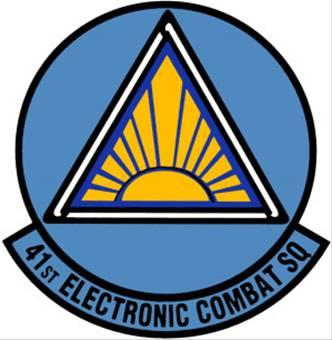
To understand the taxing nature of Major Hezel’s 110 missions, you must understand what conditions would have been like in the EB-66C’s bomb bay where the four Electronic Counter Measures officers were housed. Forget your experience in commercial airliners. Military aircraft are designed to minimize the weight of anything not directly needed to accomplish the mission. The inside of a military aircraft is a metal frame enveloped in a thin metal skin which directs and assists airflow. No weight is wasted on insulation – either sound-deadening or temperature moderation – or on smooth inner surfaces and comfort. Major Hezel’s bomb bay would have acted like a large, windowless metal drum magnifying the roar of the engines and the groans and creaks of the metal as temperatures dropped with increased altitude. They were also lengthy flights requiring one or more instances of aerial refueling.
The bomb bay work area would have been beastly hot when the aircraft was on the ground, transitioning to very cold as the EB-66C climbed to a cruising altitude of 30,000 feet for its missions over North Vietnam. All this, in addition to being shot at while in or near North Vietnamese airspace, Karl Hezel was quite literally “living in the belly of the beast.”
The 11/17/1967 Crash and Accident Report
On November 17, 1967, Major Hezel’s EB-66C lifted off from Takhli airbase to start his 110th mission. The official USAF accident report tells what happened next.
According to the USAF Accident Report for Douglas EB-66C “Destroyer” tail number 54-0473: “Shortly after departing Takhli RTAFB, the number two engine failed. Pilot Maj Max Nichols attempted to return to base. While aircraft was on short final approach it settled rapidly into rough ground 1,200 feet short of the runway, slid for a short distance, caught fire and exploded. Only two of the seven crewmen were able to escape the burning aircraft.” Five crewmen were killed, including Major Hezel. In that crash the USAF lost three majors, a captain, and a 1st lieutenant. Quite likely the two survivors were unfit for further duty.
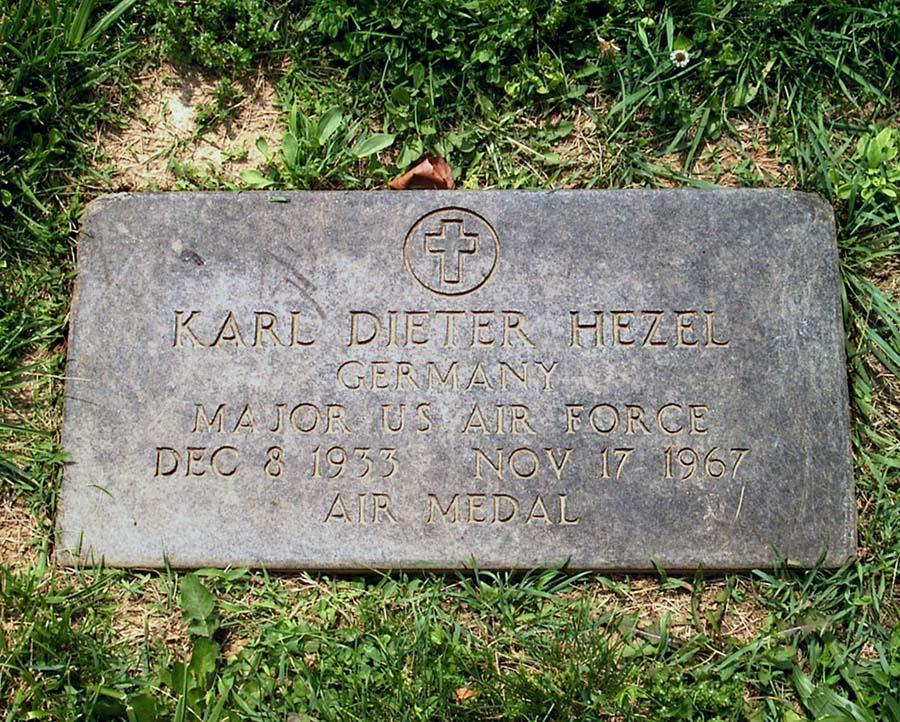
Interment and Subsequent Military Awards
According to the November 30, 1967, Cranford Citizen and Chronicle and the November 27, 1967, Wilmington, DE The News Journal, Major Karl D. Hezel was interred at Immaculate Heart of Mary Cemetery, Linwood, PA. He was survived by his parents, his wife, Frances Osowski Hezel, Karl and Frances’ son Karl Dieter Hezel, and a stepson, John J. Bader. Frances Hezel never remarried. She would teach school in Delaware County, PA and died at a relatively young age in 1984. She was also interred at Immaculate Heart of Mary Cemetery, Linwood. PA where Karl Dieter Hezel was listed as her spouse.
At the time of his death, Major Hezel held the National Defense Service Medal, the U.S. Vietnam Campaign Medal, the Republic of Vietnam Campaign Medal, the U.S. Air Force Commendation Medal, and numerous U.S. Air Medals representing over 100 missions. Subsequent to his death, he was awarded a Purple Heart, a second U.S. Air Force Commendation Medal and the Distinguished Flying Cross. The Distinguished Flying Cross (DFC) is only awarded to air crew and is the next highest medal above the Bronze Star. The citation for the latter read, in part:
“Having distinguished himself by extraordinary achievement while participating in aerial flight as an electronic warfare officer supporting missions over North Vietnam in August 1967.”
Reflecting on the death of his friend, Steve Burton wrote: “To this day I remember getting the call from Fran. Karl would have never called himself a hero. His strict German family background wouldn’t have allowed it. But he was, and I remember him on this Memorial Day 2023. One of the most emotional days of my life was in Washington D.C. several years ago. I found Karl’s name on the Vietnam Memorial wall. Then too, I had a moment of silent prayer as I placed my hand on him”.
Final Thoughts
Major Karl Dieter Hezel served in a demanding role in an unforgiving conflict, flying 110 missions supporting combat aircraft attacking North Vietnam, in an aging, and possibly flawed, aircraft. In his final mission, that aircraft failed him and the rest of his air crew. None of this detracts from his dedication and bravery. We all need to salute his dedication and heroism and to embrace his surviving family. A nation cannot ask more of one of its own than it did of Karl Dieter Hezel.
If you would like to see more about EB-66 flights over North Vietnam, go to: www.youtube.com/watch?v=FKBs3aQQD7U. This is an interview with retired USAF colonel John Fer, whose EB-66 was shot down over Hanoi February 4, 1967, and who spent 73 months in the Hanoi Hilton prison camp, some of that time with John McCain.
If you would like to read more about EB-66 activities in Vietnam, I would suggest CPT Gilles Van Nederveen’s Sparks Over Vietnam: The EB-66 and the Early Struggle of Tactical Electronic Warfare, University Press of the Pacific, Honolulu, HI, 2003.
